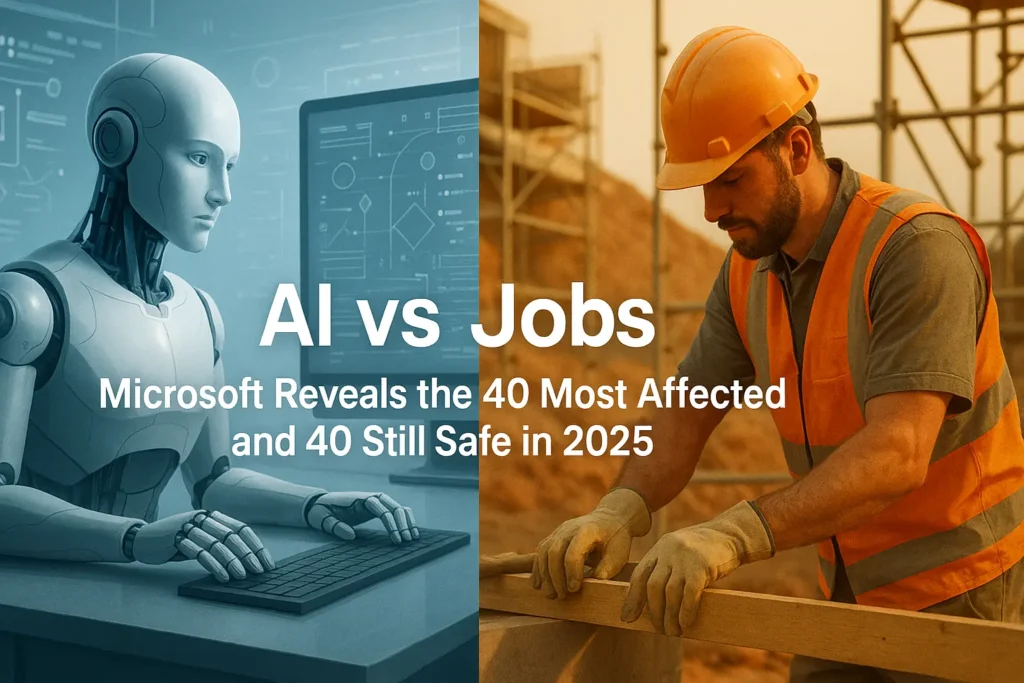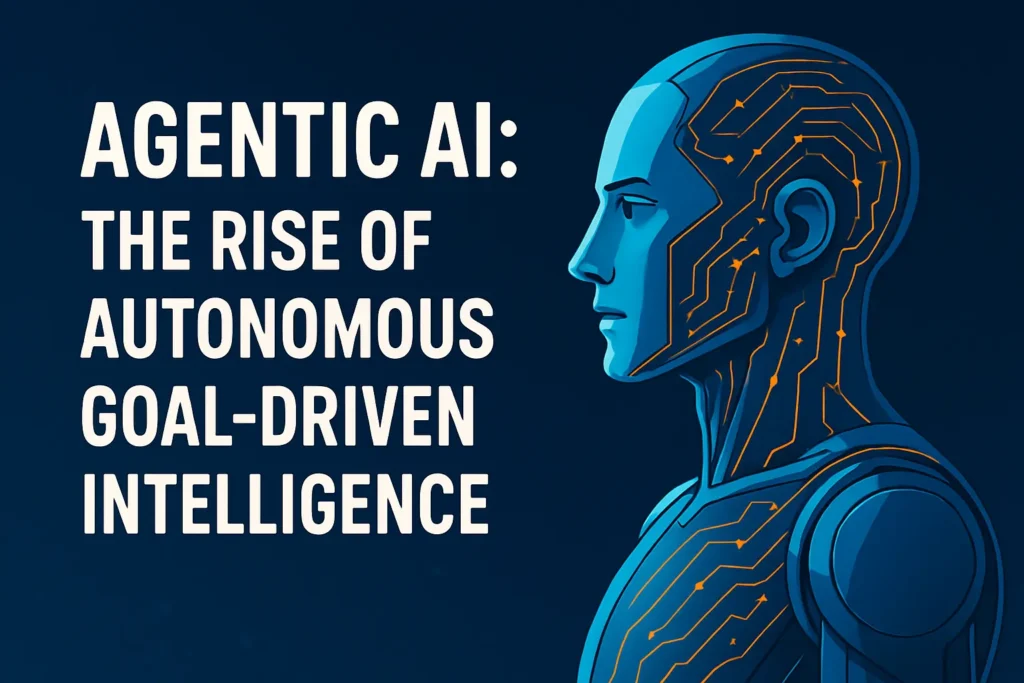What the Microsoft AI Study Actually Measured
This research, backed by Microsoft and published on arXiv, analyzes 200,000 real conversations between U.S. users and Microsoft Copilot (Bing AI). It studies what users ask Copilot to help with (user goals) vs what Copilot actually performs (AI actions).
They used work activity classifications from O*NET (U.S. labor data) to map AI capability across the job market. Each job received an AI Applicability Score, based on:
- Coverage: How often AI helps with tasks from that job
- Completion: How successfully AI completes the task
- Scope: How broadly AI covers the job’s responsibilities
This isn’t just theory. This is based on real-world use.
40 Jobs Most Affected by AI (Top Applicability Scores)
These jobs rely on communication, research, writing, or structured processes. AI tools like Copilot, ChatGPT, and Claude are already performing many tasks in these roles.
Top 10 Most Exposed Jobs
| Rank | Job Title | Why AI Can Replace It Easily |
| 1 | Interpreters & Translators | Language tasks, summarization, translation |
| 2 | Historians | Research + writing + summarization |
| 3 | Passenger Attendants | Scripted info, safety briefings |
| 4 | Sales Reps (Services) | Informational, repetitive queries |
| 5 | Writers and Authors | Text generation, editing, summaries |
| 6 | Customer Service Reps | Automated replies, chatbots |
| 7 | CNC Tool Programmers | Structured logic + coding |
| 8 | Telephone Operators | Voice-based AI handling similar functions |
| 9 | Ticket Agents and Travel Clerks | AI handling bookings, schedules |
| 10 | Broadcast Announcers & DJs | Text-to-speech, audio content creation |
Others include: Editors, Journalists, Proofreaders, Technical Writers, Public Relations Specialists, Data Scientists.
40 Jobs AI Can’t Replace (Yet)
These jobs involve physical activity, on-site work, manual labor, or personal interaction. AI has little ability to directly perform these tasks.
Top 10 Least Affected Jobs
| Rank | Job Title | Why AI Can’t Replace It Yet |
| 1 | Dredge Operators | Hands-on mechanical equipment operation |
| 2 | Bridge & Lock Tenders | Physical, location-specific control systems |
| 3 | Water Treatment Plant Operators | On-site monitoring, machinery handling |
| 4 | Rail Track Maintenance Workers | Manual tools + safety work |
| 5 | Pile Driver Operators | Equipment control + judgment |
| 6 | Floor Sanders and Finishers | Skilled manual surface work |
| 7 | Orderlies | Physical assistance and movement support |
| 8 | Logging Equipment Operators | Outdoor, machinery-heavy tasks |
| 9 | Roofers | Dangerous, hands-on outdoor work |
| 10 | Dishwashers | Physical, repetitive kitchen work |
Others include: Nurses, Phlebotomists, Firefighting Supervisors, Construction Workers, Housekeepers, and Truck Drivers.
What Makes a Job “AI Safe” or “AI Vulnerable”
Jobs Most at Risk:
- Rely heavily on text, language, or software
- Include repeatable tasks or structured workflows
- Can be done remotely or digitally
Jobs Least Affected:
- Require manual or physical presence
- Involve unpredictable real-world settings
- Need human touch, emotional support, or direct service
Who Should Be Paying Attention?
Anyone in the following sectors:
- Sales & Admin Support
- Writing, Editing, Content Creation
- Teaching, Coaching, Training
- Data Analysis & Market Research
If you’re in these fields, AI won’t necessarily take your job. But someone using AI might outperform you.
What to Do If Your Job Is on the AI-Hit List
- Learn AI tools like Copilot, ChatGPT, Notion AI, etc.
- Upskill into hybrid roles: combine tech + soft skills
- Focus on creativity, judgment, and strategy
- Adapt workflows to become an AI collaborator, not a competitor
Final Thoughts
This Microsoft study doesn’t predict mass unemployment. It highlights a new division in the workforce:
- Jobs AI can assist or replace
- Jobs AI can support but not perform
Knowledge work is shifting. Manual work is safer for now. But no job is truly future-proof. The key is to stay curious, keep learning, and work with AI, not against it.
Want to learn how autonomous AI is evolving beyond simple automation?
Source: Based on findings from a Microsoft study published on arXiv
Need help or feedback? Visit our Contact Page or email us at contact@guidlix.com



